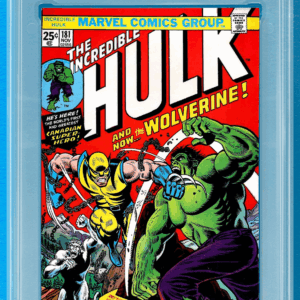The hustle and bustle of the New York City subway can sometimes feel like the last place you’d find artistic inspiration. Yet, for Phil Imbriano, senior designer at Topps, it was a goldmine of creativity. There he sat, amongst the everyday noise and chatter of New Yorkers, when something unusual caught his eye—a red-and-silver badge in the corner of the carriage. A quick photo snap later, the seed for the breathtaking 2025 Topps Series 1 baseball cards was planted.
From the clatter of the train to the clatter of his keyboard, Imbriano wasted no time in bringing the inspiration to life. By the time he reached his desk at Topps headquarters, his commuter finds had transformed into the vibrant sketches that would soon grace the palm of every eager collector. “I love drawing inspiration from everyday things,” Imbriano stated, a glint of passion unmistakable in his voice. “Sometimes it’s the mundane that unexpectedly spark something grand.”
The resulting design that emerged from this serendipitous journey is delectably bold, sporting two sweeping lines that dash dynamically across the card—a homage to the legendary 1982 Topps set, with a twist. These lines, in an ingenious move, are color-matched to each team, lending each card a playful yet dignified unity that whispers of both past and present. Interestingly, the echo of the 1982 design was a happy accident, a whimsical nod to history that was not initially intended. But as all artists know, sometimes the best of art comes from the joyful surprisal of creativity untamed.
Topps’ design process is a mélange of creativity and competition, reminiscent of the aggressive yet artistic battles on the baseball field. Designers submit their dream sketches towards a common goal, subjected to a rigorous months-long review fit for only the most worthy designs. Imbriano triumphed this time, his sketch emerging victorious over a formidable roster of 20 submissions. The creative journey is a marathon, not a sprint, as Imbriano wisely iterated, tweaking a staggering ten different versions before settling on the definitive design that collectors will soon cherish.
It’s more than just pixels and print for Topps; it’s about bringing a tangible piece of art into the world. Physical prototypes are vital in the final stages—nothing less would suffice. Clay Luraschi, Topps’ esteemed senior vice president of product, revealed, “When we’re down to the final five designs, we actually print them out and simulate opening a pack,” demonstrating just how far Topps goes to ensure perfection isn’t just strived for, but achieved. This isn’t merely designing cards; it’s crafting history, a tradition honored since Sy Berger’s original kitchen table brainstorming sessions in 1951.
Once you’ve gotten over the awe of those printed beauties, a delightful panorama of subsets awaits within the 2025 Topps Series 1. Expect favorites like Future Stars and All-Topps Team back in the game, alongside fresh faces like Training Grounds, highlighting Spring favorites with the Call to the Hall series that revels in the glory of Hall of Fame inductees. For the more artistically inclined, the City Connect Swatch Collection Autographs introduce a vivid splash, contrasting with the rustic elegance of Heavy Lumber Autographs.
Then there’s the fan-loved Signature Tunes, an ingenious blend pairing athletics with music, showcasing not just players but the soul-lifting tunes that echo their triumphs. In a nostalgic nod, the First Pitch series captures a different kind of artistry—celebrity throwers catching crowds by surprise. Brooklyn has an extra special reason to cheer, with Dodgers fans offered celebratory card variations like the now-infamous Freddie Dance—a move celebrated from the stands to the sidewalk and beyond.
This year doesn’t forget how much collectors savor anniversaries, as 2025 marks another significant milestone—a dedicated 35th-anniversary tribute to the vibrant 1990 Topps set. Yet, amidst this flurry of flair, Phil Imbriano’s foundational design remains the star of the show. “I approach designing cards like I would a movie poster,” he mused, wanting each card to deliver a statement, something uniquely bold yet quietly profound in collectors’ nests.
Luraschi summed it up to perfection. He envisions these creations serving as time capsules, “Fifty years from now, people should be able to look at a card and instantly recognize the year it’s from. This one absolutely nails that idea.” In this way, each card not only immortalizes a moment but roots itself in the collective memory of baseball lovers worldwide. Behind every design lies a story—one where subway rides aren’t just commutes but journeys into inspiration. So, next time you board a train, you may find your eyes wandering and wonder if your muse awaits unnoticed. Phil Imbriano certainly did, and thanks to him, the world of baseball cards is the better for it.





